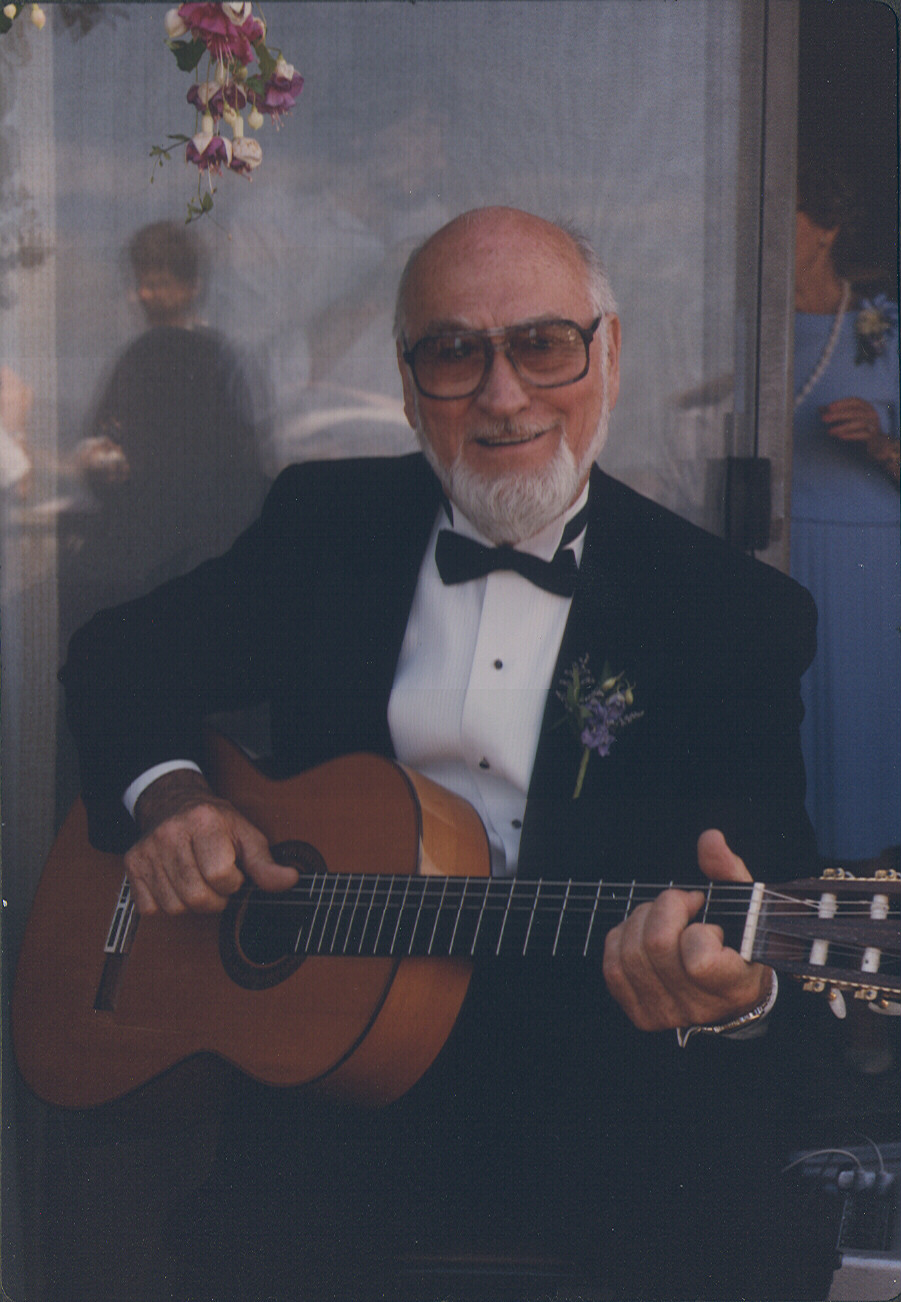

My parents were both musical, and my childhood is filled with musical memories from start to finish. My mom would stroll through the house wearing an acoustic guitar, and singing her favorite tunes of the day. Weekend jam sessions at friends' houses, outdoor stage shows and travelling tent shows in the summer, backstage access to the Grand Ole Opry road shows at the local KRNT theater in Des Moines (sometimes even with music artists coming to our home for buffet dinner between the afternoon and evening shows). My folks knew everyone who was anyone in the music business it seemed.
My dad has played guitar since he was 12, and performed professionally for his entire life, including associations with the likes of Hank Thompson (he was Hank's luthier for years), Chet Atkins and his brothers (dad played with Lowell Atkins back in Indiana when he was younger), Homer and Jethro, Jimmy Dickens, Buck White (of The White Family), and many, many more.
Before the television years, my dad was a live radio entertainer. His "beat" covered territory throughout the midwest. He started in Shenandoah, IA on KMA in 1944, followed by Waterloo, IA in 1945. From there he traveled through Detroit, was in Saginaw, MI for 3 years, then Little Rock, AR, St. Joseph, MO, Wichita, KS, Abilene, TX and ended up back at KMA in Shenandoah, IA in 1952. In November 1954 he was hired by WHO TV in Des Moines for the WHO Barndance show. TV signalled the end of the "live radio" years, in many ways.
After those years, he continued to play regularly. But focussed increasingly on musical instrument design and repair. His application of fine woodworking skills (which he learned on the GI Bill after the war) and love of woods, combined with his musical skill, was a natural path to developing guitar luthiery skills. Over time, he also learned orchestral instrument repair, and even brass and woodwind repairs. He was known for several of his "novelty" instrument designs, but was also way ahead of the curve on developing techniques which are now considered standard guitar building technologies, such as the double neck guitar, laminated necks, and detailed inlay work.
He was always looking for "new" sounds, and frequently experimented with modified amp and speaker designs, effects pedals, and eventually lead to his love of the GuitOrgan when it came out in the '70's. Over the years, he traded up his GuitOrgans to always have the latest revisions, and probably had 3 or 4 of them over a couple decades, until the manufacturer finally discontinued the product line. Still, his fans and listeners frequently associated the sound of the GuitOrgan with his playing, and his frequent use of jazz-voiced block chord arrangements in his playing style was a natural for getting the best application of a GuitOrgan.
In this area, I plan to add background stories and pictures of my father's musical career, photographic examples of his outstanding luthier work, and musical samples of his playing over the years. I have several early recordings of his playingin the Music Archives in mp3 format. I have several publicity shots from radio bands and other acts over the years in the Photo Archives. Keep checking back for new additions.
Music Archives -
updated 6/28/06
Luthiery photos (soon)
NAMM 2006 Memorial photos
The Man Who Builds Guitars - interview - reprinted from Midwest Country News
updated 6/28/06